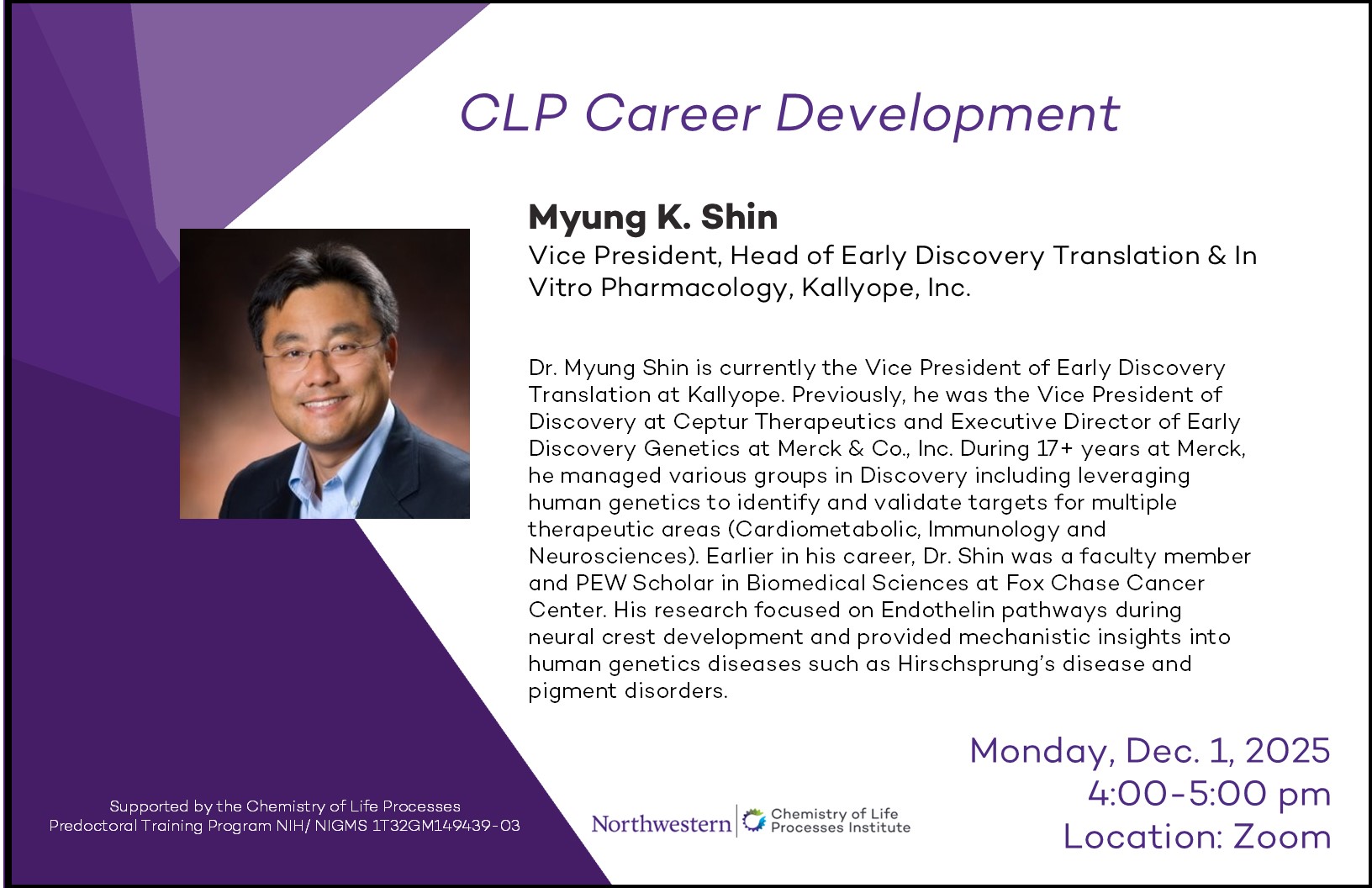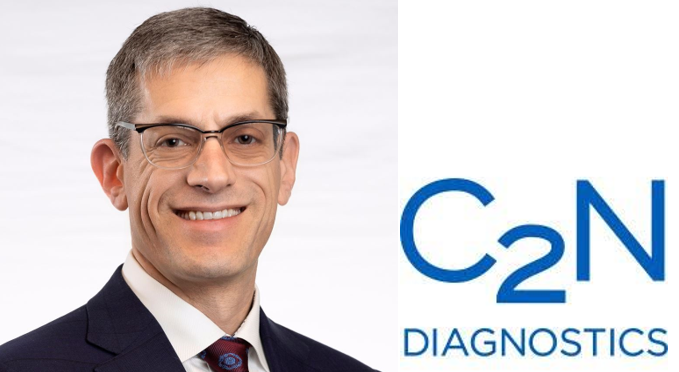CAURS AWARD
Chicago Area undergraduate research symposium award
Program dates: November 2025 – June 2026
Applications and letters of recommendation should be emailed to Sheila Judge at s-judge@northwestern.edu
The Chemistry of Life Processes Institute invites Northwestern undergraduates to apply for a $1,000 grant designed to provide a student, or team of students, with support for interdisciplinary research with a CLP faculty member. The funds are designated for the purchase of scientific supplies, and registration and travel costs to the Chicago Area Undergraduate Research Symposium (CAURS) in April 2026.
For all questions, please contact s-judge@northwestern.edu
ELIGIBILITY
Applicants must be Northwestern undergraduates. Research must be conducted with a CLP faculty member. Preference is given to rising juniors and seniors. Students must conduct their research with a CLP faculty member. Previous lab experience is suggested. Applicants will be selected based upon their academic achievements and scientific interests. CLP funds one student each year.
HOW TO APPLY
Completed application form. Click here to download the form.
A one-page, single-sided proposal describing the research you would conduct if selected for this program. Include title of project centered at top of the page. Use a standard 10 to 12 point font. A second page is allowed for figures and/or references.
A letter of recommendation from a CLP faculty member.
Applications and letters of recommendation should be emailed to Sheila Judge at s-judge@northwestern.edu
HOW TO DEVELOP YOUR PROPOSAL
Those in a lab: Work with your PI for his/her/their assistance with developing a proposal and to ask for a letter of recommendation.
Those who are looking to join a lab: Once you have an idea of whose lab you would like to join, reach out to the faculty member to set up a meeting. If possible, plan to do this at least four weeks before the application due date.
Additionally, Northwestern’s Office for Undergraduate Research has a great website with resources on how to find a lab, develop a project, and working with faculty. https://undergradresearch.northwestern.edu/overview/
Projects may include research in the following areas:
- Chemistry
- Organic Synthesis
- Inorganic Synthesis
- Spectroscopy
- Polymer Chemistry
- Biochemistry
- Catalysis
- Theory
- Chemical Engineering
- Polymer
- Chemistry
- Polymer Physics
- Catalysis
- Biochemical Engineering
- Biomaterials
- Modeling and Simulation
- Materials Science
- Metals
- Biomaterials
- Electronic Materials
- Ceramics
- Polymers
- Computational
- Biochemistry, Molecular Biology & Cell Biology
- Biochemistry
- Structural Biology
- Cell and Molecular Biology
- Biophysics
- Hormone Action
- and Signal Transduction
- Genetics and Developmental Biology
- Physics
- Experimental Condensed Matter
- Theoretical Condensed Matter
- Lasers
EXPECTATIONS
The research award allows the student to participate in research independent of the regular curriculum for two+ quarters. Students are required to:
- Perform two+ quarters of research
- Present a research poster or give an oral presentation at the Chicago Area Undergraduate Research Symposium held in April 2026.
Students are highly encouraged to actively participate in:
- CLP Lunch & Learns
- CLP-sponsored workshops
- Institute-sponsored symposia
CHICAGO AREA UNDERGRADUATE RESEARCH SYMPOSIUM (CAURS) WINNERS
| YEAR | NAME | NORTHWESTERN UNIVERSITY RESEARCH PROJECT |
| 2024-2025 | Eduardo Andrade | Discovery and characterization of GABA-Glutamate Antiporters in Bacillus subtilis reveal intracellular GABA Cycling and Homeostasis |
| 2024-2025 | Emma Baumgarten | Enzyme-decorated Spiky Gold Nanoparticles in Drug Delivery Applications |
| 2023-204 | Inna Sokolenko | Synthesis of potential hOAT inhibitor and evaluation of its activity |
| 2022-2023 | Yulia Gutierrez | Miniprotein Aggregation in Response to Physical Stress |
| 2021-2022 | Hasan Munshi | New Selective MEK7 Inhibitors for the Treatment of Pediatric Acute Lymphoblastic Leukemia |
| 2021-2022 | Lauren Hyoseo Yoon | Synthesizing Sequential Cortical Activity to Drive Decision Making Through Wireless Transcranial Optogenetics in Mice |
| 2019 - 2020 | Catherine May | Design and Synthesis of Potent MEK-7 Inhibitors |
| 2018-2019 | Viswajit Kandula | Design-driven engineering of multi-input mammalian cell-based biosensors. |
| 2017-2018 | Casey Grage Qadir | Striatal Spine Density & Spinogenesis in Indirect Pathway SPNs |
| 2016-2017 | Katherine Pastewka | |
| 2016-2017 | Anderson Huang | In vivo evaluation of a cell-permeable Ca2+ sensitive MRI contrast agent to measure neuronal activity |
| 2016-2017 | Collin Pui-sing Chow | Use E. coli strain that incorporates phosphoserine at UAA stop codons to display peptides that are phosphorylated on a specific site as genetically encoded fusions with an M13 coat protein |
| 2015-2016 | Stefanie Lombardo | In vivo evaluation of a cell-permeable Ca2+ sensitive MRI contrast agent to measure neuronal activity. |
| 2014-2015 | Kevin T. Zhao | Utilizing Chemical Probes as Tools in Protein Target-Identification Studies |
| 2014-2015 | Joseph Coomes | CO(III)-DNA gold nanoparticle complexes for the targeted treatment of basal cell carcinoma tumors |
| 2014-2015 | George Hal Baker | CO(III)-DNA gold nanoparticle complexes for the targeted treatment of basal cell carcinoma tumors |
| 2013-2014 | Leanne Friedrich | Electron backscattered diffraction to examine grain orientation in the lenses and corneas of chiton ocelli, which are mineralized eyes |
| 2012-2013 | Helen Gomez | Work with metalloregulatory proteins- zur, fur- in hopes of crystalizing protein/DNA complexes |
| 2011-2012 | Felix Richter | Conjugate folic acid to MNS in order to selectively target Folic Receptor plus cells, which include many types of cancers, and assess uptake and potential therapy by localized heating through thermal activation. |
| 2010-2011 | Kolby White | Researching benzyl anion additions to primary alkyl halides for the construction of secondary alcohols. |
| 2009-2010 | Samantha Strasser | Developing a novel means to quantify nanoscale optical refractive indices within biological cells, which can be applied to cells in the earliest stages of cancer. |




